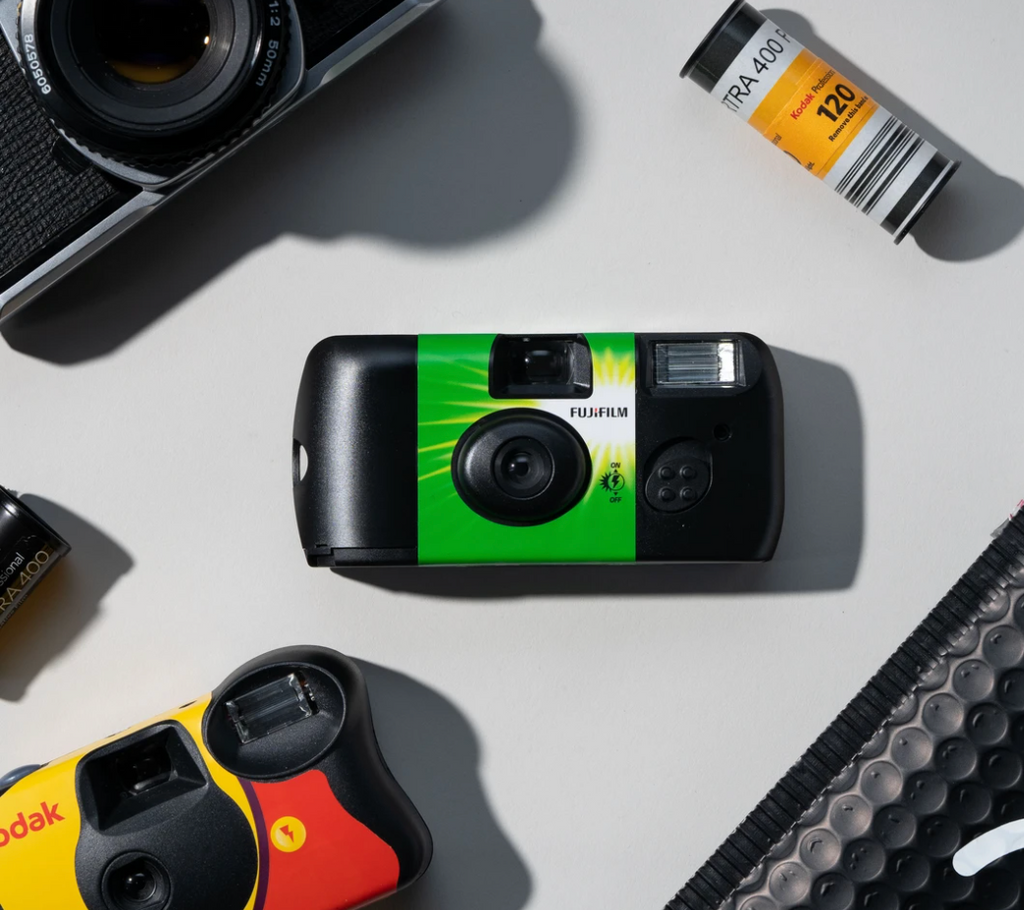You likely started shooting film on disposable cameras right? Me too.
I quickly fell in love with the look, vibe, and authentic nature that comes with shooting disposables. But after developing around 10 rolls, I decided I wanted to have more control when it comes to making images.
I went to google and did a few minutes of research on film cameras and discovered the Canon AE-1 was the best starter SLR. A few days later it showed up and I began tinkering. At first loading and unloading the camera was very intimidating but quickly became a non-issue after a few different YouTube videos.
You can check out our tutorial here!
Once you have the basics of loading / unloading it's onto the fun stuff; the exposure triangle!
Exposing images perfectly is a balance of 3 different manual settings on your camera.
- Aperture
- Shutter Speed
- ISO / ASA or film speed (100, 400, 800)
Let's start with film speed as you'll need to understand this before you purchase any! The higher the number is on your film, the more sensitive it is to light. To put this very simply, you'll want a higher number if you're shooting in conditions with less light. For example a film like Kodak Gold 200 is perfect for bright days on a beach, while something like Cinestill 800 would be great for some evening / night city street photography.
Shutter Speed is the length of time the film is exposed to light. The slower the shutter speed the brighter the image will be as more light is hitting the film! When shooting handheld I like to be at 1/125 to avoid any motion blur. If I'm very steady I've gotten away with 1/60. Anything slower will likely cause motion blur in your image.
Aperture is the hole by which light travels through. This will also have an effect on your depth of field. The lower the number, the more light you'll be letting in. This will cause a shallower depth of field therefore blurring the background. This is a great technique when trying to isolate a subject or drive the viewers eye to a specific place in the image. The higher the number, the less light will be let in. This also will affect your depth of field and cause more of the image to be in focus.
With this in mind and a bit of practice and experimentation you'll be able to properly expose your first images! Play with the settings and your cameras light meter and begin shooting. Film stocks like Portra 400 / 800 are very forgiving when developing and tend to like more light. I even purposefully overexpose my Portra! You can go several stops of light over "proper exposure" and still obtain a beautiful image.
As always if you're looking for a simple way to develop film please check out our home page! We develop film and send it right to an app on your phone! If you don't have the app we also send film scans via email!
Shoot us a DM or email if you have any questions!
-Team Indisposable

